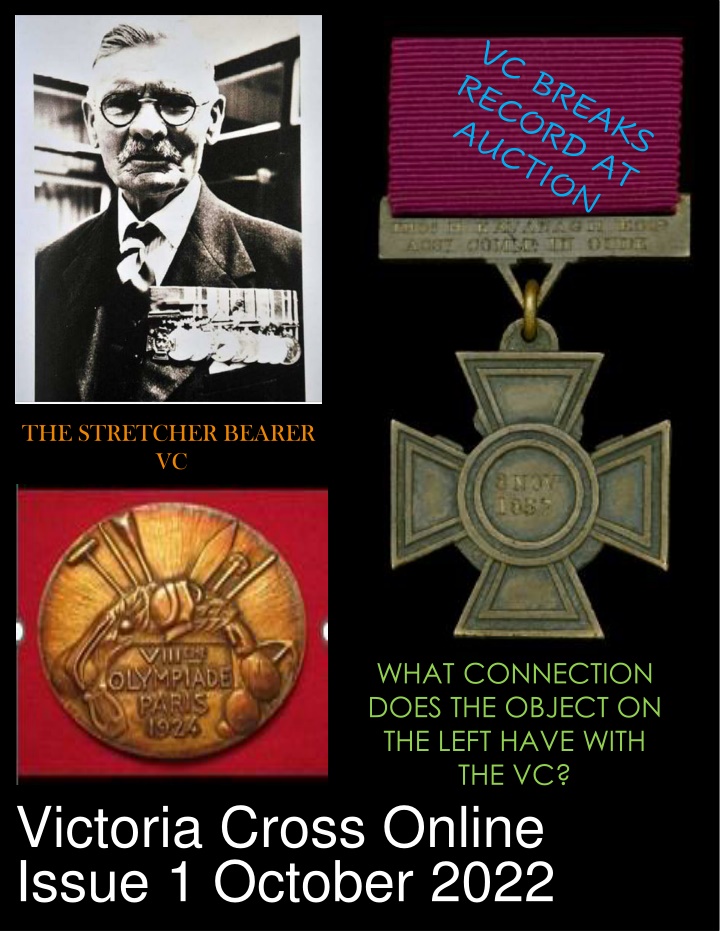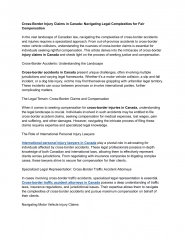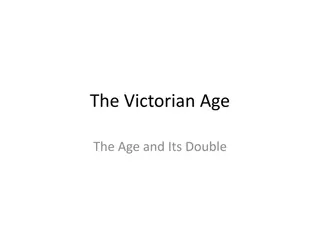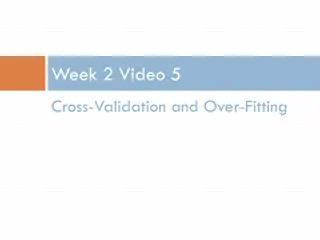
Connection Between 'The Stretcher Bearer VC' Object and the Victoria Cross
Discover the intriguing connection between the object depicted on the left in 'The Stretcher Bearer VC' image and the prestigious Victoria Cross. Delve into the historical significance and relevance of this link in the realm of military honors.
Download Presentation

Please find below an Image/Link to download the presentation.
The content on the website is provided AS IS for your information and personal use only. It may not be sold, licensed, or shared on other websites without obtaining consent from the author. If you encounter any issues during the download, it is possible that the publisher has removed the file from their server.
You are allowed to download the files provided on this website for personal or commercial use, subject to the condition that they are used lawfully. All files are the property of their respective owners.
The content on the website is provided AS IS for your information and personal use only. It may not be sold, licensed, or shared on other websites without obtaining consent from the author.
E N D
Presentation Transcript
THE STRETCHER BEARER VC WHAT CONNECTION DOES THE OBJECT ON THE LEFT HAVE WITH THE VC? Victoria Cross Online Issue 1 October 2022
EDITORS COMMENTS Welcome to the pilot edition of the Victoria Cross Online magazine. The magazine was borne out of an idea that was proposed on the VCO Facebook group page by Thomas Stewart about a revival of the Victoria Cross Society. Contents 3-5 VC BREAKS RECORD Following some positive discussions and offers of support from fellow VC enthusiasts I decided to take up the gauntlet and put together a first edition for publication on the FB group. 6-7 THE STRETCHER BEARER VC The ultimate aim of the magazine is, if its seen as worthwhile, to email it out to readers on a regular basis. As editor I would then welcome contributions from readers of articles for future editions. 8-9 OLYMPIC GOLD MEDAL VC 10-11 GEORGE EVANS VC GRAVE RESTORATION
VC Breaks Record The first civilian Victoria Cross of just five to be awarded has sold for an auction record hammer price of 750,000 at London saleroom Noonans. With an estimate of 300,000- 400,000 the Siege of Lucknow VC awarded to Thomas Kavanagh, one of just 5 civilian awards was bound to attract substantial interest. When the hammer finally fell at Noonan s, and buyer s premium was added, the estimate was almost doubled at 930,000, over 90,000 higher than the previous record set in 2017 at Morton and Eden for the Gordon Campbell VC DSO group. Thomas Kavanagh VC Born on 15th July 1821 in Mullingar, County Westmeath, Ireland, he was the third son of the bandmaster of the 3rd (Buffs) Regiment. The family moved with their father when he was posted to India in 1834 where the 3rd Regiment were stationed at Meerut. When he was old enough, young Thomas was employed as a clerk in the office of the
Commissioner for Meerut until 1839. He then worked in a Counting House for a merchant at Mussoree until 1843 before becoming head clerk to the Government Treasury at Ambala. Another move found him appointed head clerk at the Board of Administration at Lahore and then assistant magistrate at Jullindur. Despite being constantly in employment and gradually moving up the civil service ladder, he was struggling financially. He then transferred to Mooltan, but was almost fired for his mounting debts. He had to be saved by Lord Dalhousie who secured him a job of Superintendent of the Office of the Chief Commissioner in Lucknow. When the siege of Lucknow began, Kavanagh had his wife, Agnes, and four of his ten children with him. He was in charge of the male civilians and set about organising them into a fighting unit. He issued arms, but some felt it was a foolish move. By the end of July 1857, the bigger threat was disease particularly cholera, fever and smallpox. Thomas lost his eldest son, Cecil, to sickness and was worried it would happen to more of his children. Relief finally came with the arrival of Havelock s column, and Kavanagh was determined to play a prominent role. By the end of October 1857, he was appointed assistant field engineer. Kavanagh s responsibility was to discover mines being dug by the rebels and destroy them with countermining. It involved crawling through cold, dark tunnels and lying in wait for a rebel miner, and shooting him. On one occasion, he had crawled too far in order to retrieve the enemy miner s tools, and alerted the rebels. He was challenged to get tools if he was daring enough. Kavanagh leapt into the tunnel and retrieved the tools before they could react.
In November 1857, Kavanagh learned that a message needed to be taken into the Residency and he offered to try. He approached Colonel Napier, who turned him down, before persuading Sir James Outram. Kavanagh then disguised himself and tested the disguise by walking into a meeting with Outram who didn t recognise him. On 15thNovember 1857, he ran through the streets dodging enemy fire until he reached the Steam Engine House and was shown through to Outram. He then escorted Outram and Havelock back through the enemy fire to Campbell. Campbell was astonished by Kavanagh s audacity. He returned to the UK soon after, but it required an amendment to the Royal Warrant on 6thJuly 1859 for a non-military person to receive the VC. He received his medal from Queen Victoria at Windsor on 4th January 1860. He then courted controversy by publishing his memoirs How I Won the Victoria Cross . He died in 1882 after falling ill on voyage near Gibraltar. He was buried in North Front Cemetery with full military honours. https://victoriacrossonline.co.uk/?page_id=8529
The Stretcher Bearer VC Most Decorated Soldier of World War One It is common knowledge amongst most experts on the Victoria Cross that the most decorated officer of the First World War is none other than Captain Noel Godfrey Chavasse VC* MC. What is amazing is that Chavasse did this as a Medical Officer. However, Chavasse does not hold the distinction of being the most decorated soldier of the war, and again it came from someone in the medical services, not a doctor this time, but a stretcher bearer by the name of William Harold Coltman VC DCM* MM*. The VC was last to be awarded to Coltman for his actions on 3rd/4th October 1918 at Mannequin Hill. William Coltman s VC Courtesy of Paul Lee
During the course of 48 hours Lance-Corporal William Coltman, a stretcher bearer, hearing that wounded had been left behind during a retirement, went forward alone in the face of fierce enfilade fire, found the casualties, dressed them and on three successive occasions, carried comrades on his back to safety, thus saving their lives. . He was gazetted for VC on 3rd January 1919, and was invested with his Victoria Cross by King George V at Buckingham Palace on 22nd May 1919. After the war, Coltman returned to Burton on Trent and took a job as a gardener with the town's Parks Department. During the Second World War he was commissioned in the Army Cadet Force in 1943 and commanded the Burton ACF. He retired in 1963 and died at Outwoods Hospital, Burton, on 29th June 1974 at the age of 82. He lies buried with his wife Eleanor May (n e Dolman) in the churchyard of St Mark's Parish Church in Winshill. To summarise the admiration that you have to feel for both Chavasse and Coltman, who both entered no-mans land hundreds if not thousands of times with supreme gallantry to bring relief and comfort to the wounded, whilst not being soldiers in the combat sense, take the line from Coltman s DCM citation set the highest example of fearlessness and devotion to duty to those with him https://victoriacrossonline.co.uk/?page_id=3242
Lieutenant-General Sir Philip Neame VC, KBE, CB, DSO, KStJ (1888 - 1978) was born near Faversham and served in both World Wars. He is the only person ever to be awarded both the Victoria Cross and an Olympic Gold Medal. On 19th December 1914 at Neuve Chapelle, France, Lieutenant Neame, in the face of very heavy fire, engaged the Germans in a single- handed bombing attack, killing and wounding a number of them. He was able to check the enemy advance for three-quarters of an hour and to rescue all the wounded whom it was possible to move. Lieutenant-General Sir Philip Neame VC, KBE, CB, DSO, KStJ (1888 - 1978) Neame was also mentioned in despatches twice, and promoted to Captain in February 1915. He was wounded on 10th March 1915, but it was a minor wound, as he was soon appointed Adjutant 8th Division Royal Engineers, on 30th March 1915. He received a civic reception in Faversham on 17th July, two days before he received his VC from King George V at Windsor Castle. He was a member of the British team at the 1924 Paris Olympic Games, winning gold and bronze medals for running deer rifle shooting and is the only VC with an Olympic Gold Medal. He was promoted to Major in January 1925.
Having been severely injured by a tigress whilst hunting, he spent months in hospital with blood poisoning and fever, during which time he was placed on half pay. His arm was about to amputated when he made an unexpected recovery. The nurse who looked after him in hospital in Simla was Harriet Alberta Drew. They were married on 12th April 1934 and went on to have four children Gerald David (born 1935), Veronica Kathleen (born 1937) and twins Nigel and Philip (born 1946). In 1941, Rommel attacked the Western Desert Force and both Neame and General Sir Richard O Connor were taken prisoner on 6th April 1941. They were held in Sicily and near Florence with other senior prisoners including Major General Adrian Carton de Wiart VC. There were many escape attempts. They managed to escape and reached London on Boxing Day 1943. He was knighted in 1946 and published his autobiography the following year. He died on 28thApril 1978 in Selling, Kent. https://victoriacrossonline.co.uk/?page_id=11590
George Evans VC Lorem ipsum dolor sit amet, et dolore magna aliqua. consectetur Grave Restoration https://www.facebook.com/MilitaryGraveRestorer In June 2022, Military Grave Restorer Steve Davies, formerly of the Royal Green Jackets, was contacted through his Facebook group to look at renovating the grave of George Evans VC, whose final resting place was in Elmers End Cemetery, Beckenham, Kent. George was born in Kensington, London in 1876 and enlisted with the Scots Guards in 1894, and served in the Boer War. After being demobbed, be firstly became a policeman then an Inspector with the NSPCC. On 30thJuly 1916, at Guillemont, France, he volunteered to take a message, a job that five other men had been killed attempting to do. He succeeded in his mission despite being wounded. He had to dodge from shell hole to shell hole for over 700 yards under severe fire.
He became known as the Childrens VC because of his work with the NSPCC. He was taken prisoner later on, 30th July 1916, and was held in various camps in Germany, where he is reputed to have lost six stones in weight due to poor diet. He was exchanged through Holland on 6th June 1918 and stayed there until 19th November, when he was repatriated. He was demobilised to the Class Z Reserve on 19th February 1919. His VC was the last gazetted for the Great War and it was presented by King George V at Buckingham Palace on 12th March 1920. George resumed his work for the NSPCC in Hackney and Sydenham, London. He worked for the Society for 27 years and is understood to have helped over 12,500 children in that time. Georrge was also a Freemason with the Wilton Lodge No 1077, East Lancashire. George died suddenly at his home at 5 Tremaine Road, Anerley, London on 28th September 1937. Before After






















